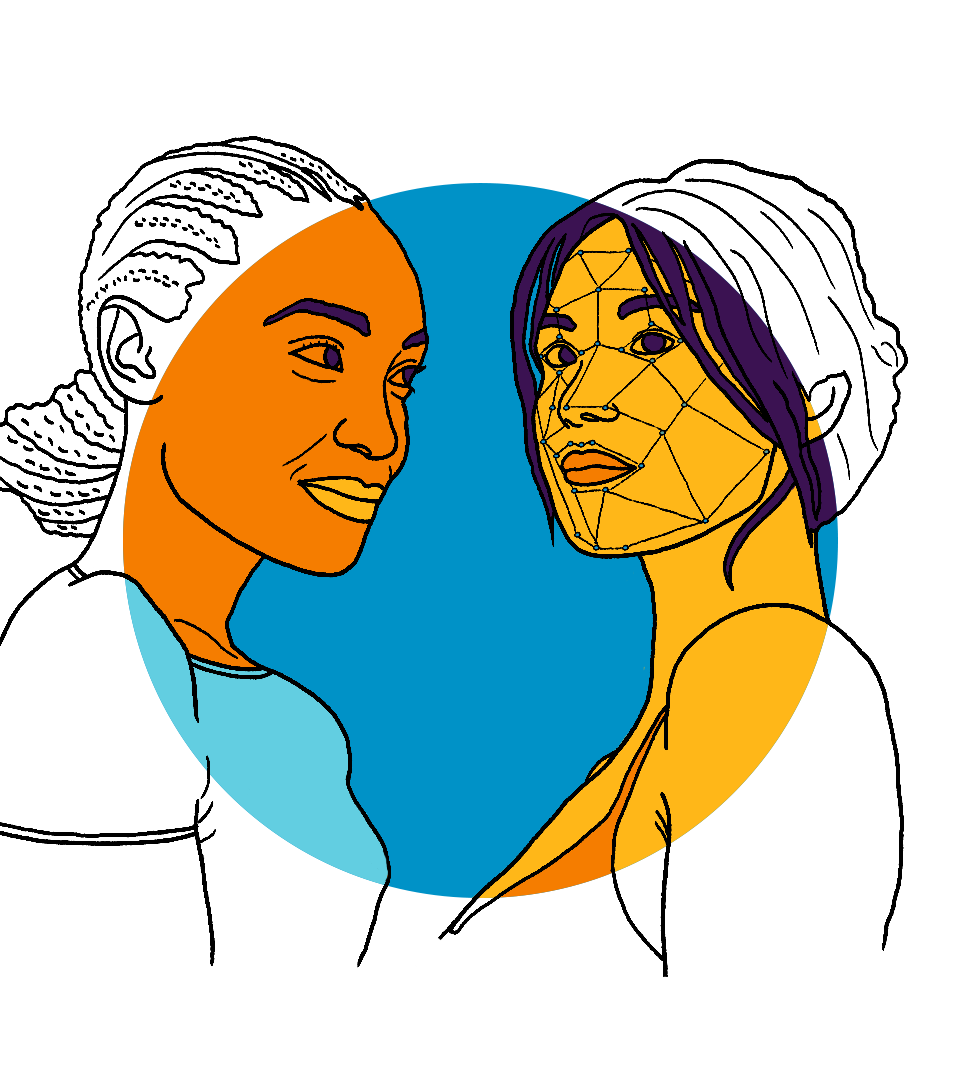Conversational AI is democratising access to wisdom, experience and expertise. Creative organisations that embrace the technology can create richer connections with their audiences.
Digital media, synthetic human avatars, deep fakes and conversational AI. All of these are playing roles in how humans, humanity and human experiences are represented. Companies, organisations and creators will increasingly be faced with sometimes challenging choices about how they represent humans, the use of fictional versus real human personas, and how technology can support the next stages of human representation through digital means.
The birth of virtual humans
No one can have missed the development of digital humans and virtual influencers. From Lu do Magalu to Thalasya, synthetic personalities are developing online communities and promoting social causes and commercial products. Operating in the same social media space as human influencers, many of them have individual ‘interests’, such as art and film, and talk about their ‘lifestyles’, including sustainable fashion and veganism.
Obviously, being digital, none of these influencers have ever eaten anything, worn real clothes or taken part in any
activity. Whether this matters or not for fictional creations might depend on a myriad of factors, such as your attitude to the blend of human and digital creations being represented in the same space. Or whether the audience knows who the humans are behind these digital creations – who chooses the clothes, views and lifestyles of the synthetic personalities. Trevor McFedries, one of the main creators behind digital influencer Miquela, has talked about how he strives for the character to reflect the lived experiences of members of the creative team, and to reflect societal concerns and issues.
Just as storytellers have done for thousands of years, today’s digital creators are finding power in the stories of fictional people. These curated tales and personalities can bring inspiration, myth and enjoyment. They can shine a spotlight on issues and – because they can be created and controlled – provide an avenue for human representation that can be perfectly defined to reflect a story, company, organisation or brand. As a result, creative and social opportunities for the use of virtual and digital humans will continue to develop at pace.

Scaling access to human experience
Most of us will have had a moment with a unique individual who has changed our lives by sharing a unique perspective – whether it was a leader, teacher, parent, friend or someone we disagreed with. In these moments, we not only get a glimpse into someone else’s life and perspective, we also have the opportunity to reflect on our own.
This process undoubtedly leads to creativity and change. Conversation with others who might have lived very differently from us can challenge us and build empathy, understanding and inspiration.
Alongside the development of entirely synthetic humans, digital media and conversational AI are transforming access to the knowledge, wit and wisdom of real people whose lived experience makes them unique. And we have the opportunity to harness these approaches to drive positive impact.
Our work at In The Room draws on this principle. Our conversational media platform enables the use of authentically captured audiovisual content, combined with conversational AI, to create voice interactive experiences with real people you might never get to meet in person.
Global audiences can ask questions ‘to’ unique individuals and receive an answer immediately from an archive of pre-recorded, authentic answers. The person is reflected in their own words, tone and body language – being entirely ‘themselves’. As a consequence, the technology enables deep engagement with the audience, who can make their own ‘conversation’, with remarkable results.
As voice interaction and conversational interfaces grow, they are fuelling a new conversational economy, where conversation is the foundation of the relationship between the audience and the organisation
Our platform has been used for inspirational, creative, commercial and educational purposes. Importantly, it can be used for areas in which the individual human experience is vital for the audience. For example, the technology has been used to preserve the legacy and experiences of Holocaust survivors, allowing young people, who will never meet these witnesses in person, to ask questions and hear their first-hand accounts directly.
It has also been used to scale up access to world- leading experts in various mental health conditions, letting people receive answers to frequently asked questions about topics such as depression from specific and known experts. And it has provided access to the stories of those who have experienced mental health issues, enabling people to ask them questions about their journey and, in many cases, their recovery.
Audiences recognise the power of connecting with the experiences of real people – both to better understand serious topics and to gain access to uniquely talented people such as leaders, musicians and artists.
Working alongside Universal Music and the National Portrait Gallery, our work creating the world’s first interactive digital portrait, featuring legendary musician Nile Rodgers, showed the power of a one-to-one digital interview for fans, deepening their understanding of his music, talent and impact on the industry.
Real humans are not as controllable as fully virtual avatars. They bring with them the messiness of lives lived, mistakes made and narratives that do not always make sense. They also bring the inspiration of real challenges overcome – and they bring hope, empathy, humour and more.

The conversational economy
Our research shows that audiences perceive significant power and value in connecting with real, individual, human experience, but also that they are open to using new technologies to access unique people who are in demand.
As voice interaction and conversational interfaces grow, they are fuelling a new conversational economy, where conversation is the foundation of the relationship between the audience and the organisation. Organisations will need to embrace new approaches to speak with their audiences, rather than broadcasting to them. New tools will support this revolution, enabling creative companies and nonprofits to increase the impact of their experts and leaders, and reach their audiences at scale.
While individuals and organisations will have their own choices to make about the use of synthetic or authentic media, or blends of the two, it is clear that these approaches will co-exist and that there will be many distribution points for these types of experiences.
As the conversational economy develops, creative organisations will need to think deeply about how, when and why they can use new conversational techniques – and what type of human representation they want to put forward. With ambition, we can harness the power of human impact and the power of scalable technology to solve real problems by democratising access to the wit, wisdom and knowledge of unique individuals.








